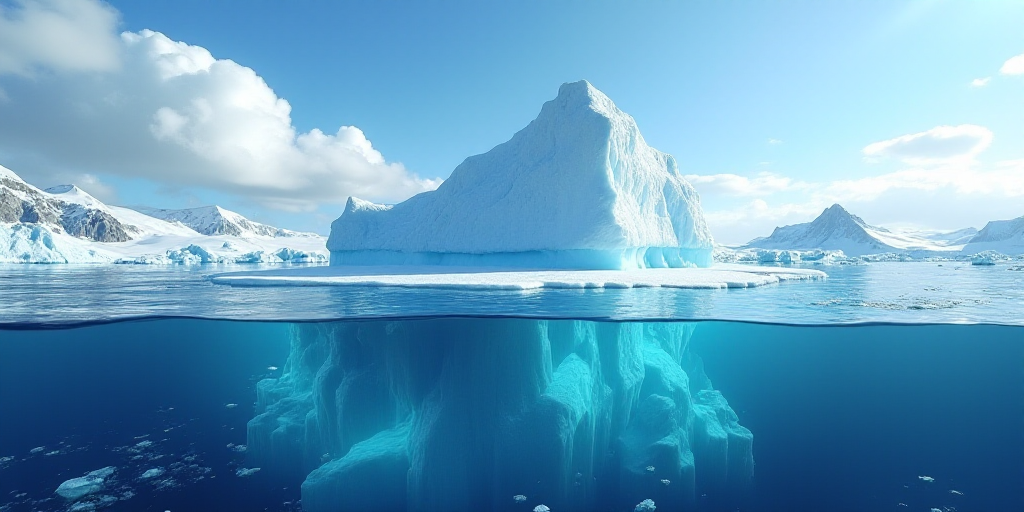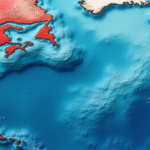Record-Breaking Temperatures and Extreme Climate Events Predicted
The world is expected to experience more record-breaking temperatures in the next five years, with the Arctic region projected to warm more than three times the global average, according to a recent report from the United Nations’ World Meteorological Organization (WMO).
Key Findings from the WMO Report
- High Probability of Record-Breaking Years: There is an 80% chance that at least one of the next five years will set a new heat record, with a high likelihood that the average global temperature will exceed 1.5°C above pre-industrial levels.
- Accelerated Climate Change Impacts: The report highlights that each additional fraction of a degree in global warming will exacerbate extreme weather events, such as more severe heatwaves, intense rainfall, prolonged droughts, accelerated ice melt, rising sea levels, and warmer oceans.
- Arctic Warming Amplification: The Arctic is projected to warm at a rate more than twice the global average, accelerating ice melt in the Arctic and northwestern Pacific Ocean.
- Regional Precipitation Variations: The report predicts above-average precipitation in certain regions, including the Sahel, northern Europe, Alaska, and northern Siberia, from May to September between 2025 and 2029. Meanwhile, the Amazon region is expected to experience drier-than-usual conditions during this period.
Context and Relevance
The WMO report comes at a critical time as the world grapples with the consequences of climate change. The past year was recorded as the warmest on record, marking the first breach of the Paris Agreement’s 2015 commitment to limit global warming to well below 1.5°C above pre-industrial levels.
The WMO, a specialized agency of the United Nations, plays a crucial role in coordinating global weather, climate, and water observations. Its reports provide essential data for policymakers, scientists, and the general public to understand and address climate change impacts.
Who is the WMO?
The World Meteorological Organization (WMO) is a specialized agency of the United Nations responsible for international cooperation in the atmospheric sciences sector. Established in 1950, the WMO coordinates meteorological activities and programs, promotes the exchange of atmospheric information, and supports research in meteorology. Its member states include 193 countries and the European Union.
Why is the WMO Report Relevant?
The WMO report’s relevance stems from its authoritative status as a global assessment of climate conditions. Its findings are crucial for informing policy decisions, guiding adaptation strategies, and raising awareness about the urgency of climate action. The report’s projections emphasize the need for immediate and concerted global efforts to mitigate climate change impacts.
How Will the Report’s Findings Impact Others?
The WMO report’s findings will influence various sectors, including:
- Policy and Governance: The report will inform national and international climate policies, encouraging more ambitious emission reduction targets.
- Adaptation and Resilience: It will guide adaptation strategies for communities vulnerable to climate change impacts, such as increased frequency of extreme weather events.
- Scientific Research: The report’s data will contribute to ongoing climate research, helping scientists better understand and model climate change processes.
- Public Awareness: The report’s findings will raise awareness about the accelerating climate change impacts, fostering public support for climate action.
Key Questions and Answers
- What does the WMO report predict about global temperatures? The WMO report indicates that global temperatures will remain at record or near-record levels until the end of the decade.
- How will the Arctic region be affected by global warming? The Arctic is projected to warm more than three times the global average, accelerating ice melt in the region and northwestern Pacific Ocean.
- What are the expected precipitation patterns according to the WMO report? Above-average precipitation is predicted in certain regions, including the Sahel, northern Europe, Alaska, and northern Siberia. Meanwhile, the Amazon region is expected to experience drier-than-usual conditions.






